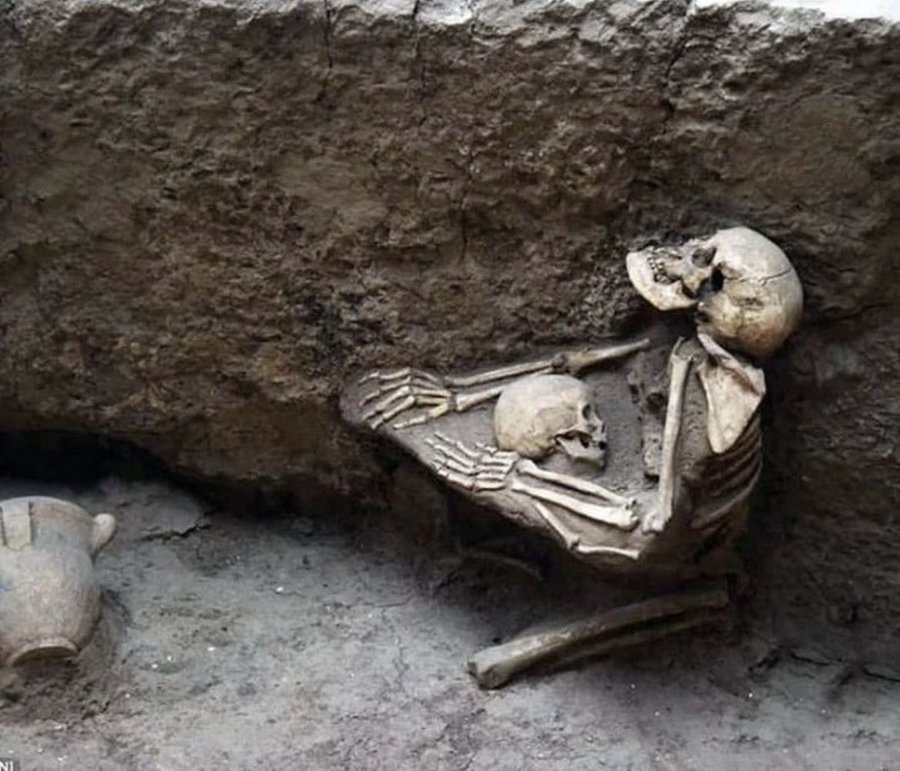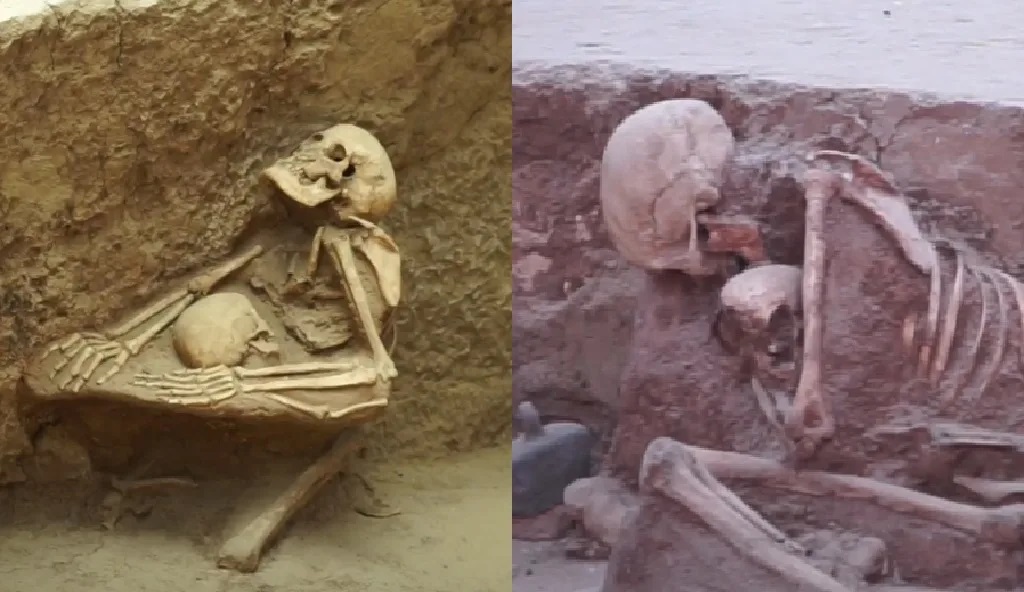
Skeletal remains locked in eternal embrace are some of the poignant exhibits of a museum at a prehistoric archaeological site in central China dubbed “China’s Pompeii”.
In 2015, the Lajia Ruins Museum in Qinghai Province unveiled preserved artifacts that include remains of the ancient civilization that perished in sudden death.
Among the display were skeletal remains dating back 4,000 years huddled together, apparently protecting each other at the time of the disaster.
One scene frozen in time that touches the heart of many museum visitors shows a mother apparently wrapping her arms around her son in a protective embrace. Another pair of skeletons were also found covering each other while lying down on the floor.

World’s oldest known noodles discovered at China’s Pompeii
The ruined buildings strewn with debris served as a backdrop, allowing archaeologists to piece together a tragic tale. It became evident that the villagers residing along the Yellow River were defenseless against the immense power of Mother Nature.
In addition to the skeletal remains, tools and homeware, archaeologists also unearthed thin yellow strands in an upturned pot, believed to be the world’s oldest known noodles.
While the noodles were initially believed to be made from a combination of foxtail and broomcorn millet, further experiments revealed that the Lajia noodles might have incorporated other starches, possibly barley or wheat. The inhabitants of Lajia used stone knives to process, peel and cut these grains.
The Lajia site, discovered in 1981, covers an area of 680,000 square meters in China’s upper Yellow River region.
The site is associated with the Qijia culture, which was known for its agricultural economy during the late Neolithic and early Bronze Age periods.
Two main theories emerged from the scientific analysis of the site.
The first theory suggested that the village was struck by a devastating earthquake. The seismic activity also triggered the formation of a natural dam upstream on the Yellow River, resulting in an accumulation of water.
Several months later, the dam collapsed, unleashing a catastrophic flood that engulfed the village. The presence of sediment and the concurrent damage from the earthquake indicated that these events likely occurred in the same year.
The second theory pointed to flash floods and mudslides as the culprits behind the villagers’ demise, as these natural phenomena have been recurrent in the region throughout history.
The village of Lajiazhen offered valuable insights into the lives of ancient Chinese peasants, revealing their agricultural practices and their keeping of animals for sustenance and religious purposes. Moreover, this is the site of the above-mentioned extraordinary find in 2005—an overturned pot containing the world’s oldest noodles.
Due to its significance, the site has gained widespread renown and is often referred to as “China’s Pompeii.”
Related: Pompeii Excavation Uncovers Skeletal Remains From Vesuvius Earthquake
See all the latest news from Greece and the world at Greekreporter.com. Contact our newsroom to report an update or send your story, photos and videos. Follow GR on Google News and subscribe here to our daily email!



